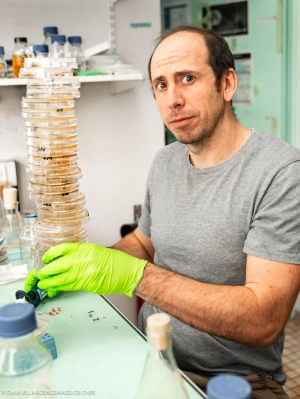In silico analyses revealed that eukaryotic nuclear proteome is strongly enriched in Intrinsically Disordered Regions (IDRs) in their N- or C-terminal extension. The IDR is a domain that lacks a fixed or ordered three-dimensional structure and is present in more than 50% of eukaryotic nucleolar proteins. A variety of roles have been attributed to IDRs due to their ability to establish transient and multivalent interactions, but we still have a poor understanding of the role and mechanism of action of these IDRs in the nucleolus and during ribosome biogenesis. Recently, liquid-liquid phase separation (LLPS) has provided a possible mechanism that remains highly controversial. LLPS is driven by low-energy interactions between specific proteins containing intrinsically disordered regions, resulting in the compartmentalization of macromolecules into coexisting subdomains.
My work aims to explore the sequence-function paradigm applied to IDRs, one of the major future challenges to be overcome in molecular biology especially since the emergence of Alpha-Fold prediction. Recently, we described the role of an extremely abundant and largely overlooked lysine-rich IDR (https://www.nature.com/articles/s41467-024-53805-1). Other publications (https://orcid.org/0000-0003-2122-6458)
